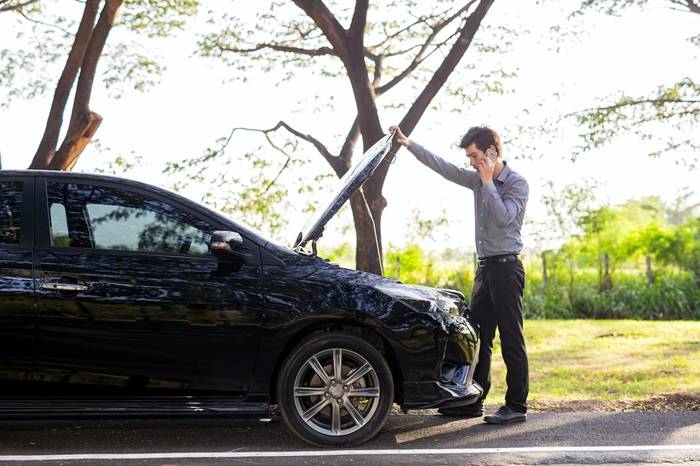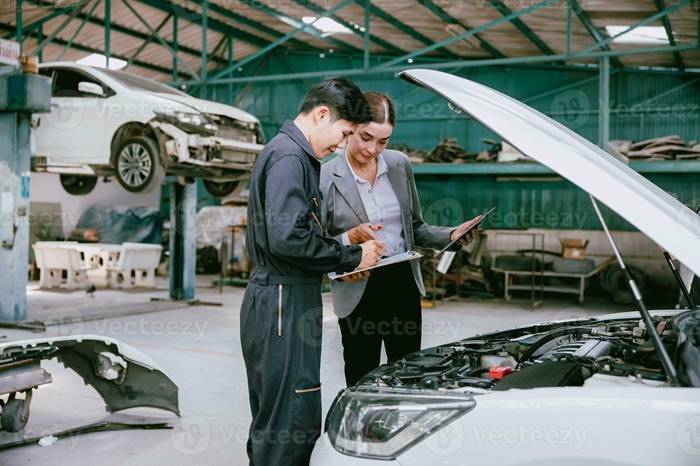Nothing is as uncomfortable for a driver than a road breakdown. A clunk. A screeching noise. Smoke pouring out of the bonnet. And worse still, nothing at all as you turn the key. You find yourself stranded with a faulty car.
A stalled car is more than a car that won’t go. It is uncertain. It is a waste of time. It is anxiety over repair bills. And yet it is also a lesson. Each breakdown shows us how delicate equipment is, and how much attention they need.
This book explores the entire drama of the broken-down car. Why cars break down. What to do. How much it will cost to fix. And how not to get stranded again.
What Does a Broken Car Mean?
Definition
A wrecked car is any vehicle that is not running properly. It may still go but not that great. Or it may not go at all. A small issue like a dead battery may stop a car dead as a blown motor.
The Experience
Drivers everywhere share the same image. A car on the side of the road. Hazard lights flashing. The hood up. A driver making calls for help. A broken car is not only a private inconvenience but also a public spectacle.
Unusual Reasons for a Broken Car
Engine Problems
- Overheating from leaking coolant.
- Oil starvation from neglect.
- Worn timing chains or belts that snap.
Electric Issues
- Dead batteries, typically in winter.
- Failing alternators that will not charge.
- Short circuits and fuses blown.
Transmission Failures
- Slipping gear due to worn parts.
- Burnt clutches for manual transmissions.
- Low or leaking transmission fluid.
Tire and Wheel Trouble
- The flat caused punctures.
- Worn tread blowouts.
- Alignment problems making the car unsafe.
Brake Failures
- Pads worn down to metal.
- Leaking brake fluid.
- Seized calipers or broken rotors.
Fuel System Problems
- Clogged filters starving the engine.
- Failing fuel pumps.
- Gauges defective that leave drivers stranded with empty tanks.
Each reason is special, but the outcome is the same. A broken car and a driver forced to react.
Warning Signs of a Broken Car
- Dashboard Lights: The most common is the check engine light. But oil pressure, temperature, battery, and brake lights also warn of danger.
- Sounds and Smells: Grinding noise. Squeal. Smell of burning oil or coolant. A broken car warns before it completely breaks down.
- Performance Changes: Hard starts. Rough shifts. Loss of power. Strange vibrations. All signs of impending doom.
- Physical Signs: Smoke under the hood. Fluid on the ground. Bulging tire. These are surefire warning signs.
What To Do When Your Car Breaks Down
Step One: Protect Yourself
Pull slowly off the road. Engage hazard lights. If it is safe, move to the side of traffic.
Step Two: Examine the Car
Check for the obvious problems. A blowout tire. Steam coming from the radiator. Loose battery cable.
Step Three: Call for Help
The solution may be out of reach. Call for roadside assistance. Call a tow truck. Call family if late.
Step Four: Make Minor Repairs
Flat tire? Change to spare.
Dead battery? Jump-start with jumper cables.
Dry tank? Walk to a station if safe.
Step Five: Make Arrangements for Repairs
A broken car may need to go into a shop. Have things done in a rush. Driving with issues just makes it worse.
The Emotional Weight of a Broken Car
- Stress: Breakdowns happen at the worst times. To get to work. On vacation. Stress builds fast.
- Fear: Drivers are afraid of repair bills. Will it be a quick $100 repair or an expensive $1,500 nightmare? The unknown is terrifying.
- Helplessness: Not everyone knows how to fix cars. A breakdown leaves many feeling powerless.
- Relief: Sometimes help arrives quickly. A friend, a mechanic, or even a stranger lends a hand. Relief softens the memory.
- Memories: Ask drivers about their worst car story. Most will share a tale of a breakdown. These memories stay long after the car is fixed.
Fixing a Broken Car
DIY Repairs
- Changing a flat tire.
- Replacing a battery.
- Adding oil or coolant.
Professional Repairs
- Rebuilding engines.
- Transmission repair.
- Diagnostic electrical systems.
Preventive Repairs
- Regular oil change.
- Brake inspection.
- Rotating tires.
Prevention is cheaper than cure.
Repairing a Broke Car Cost
| Repair Type | Typical Cost |
| Battery | $100 – $300 |
| New tires | $80 – $200 per tire |
| Oil leak | $150 – $400 |
| Transmission overhaul | $1,500 – $4,000 |
| Engine replacement | $3,000 – $7,000 |
| Brake rebuild | $500 – $1,500 |
The cost varies depending on the part, the labor, and the time for which the problem was ignored.
Broken Car in Everyday Life
- On the Highway: Stranded vehicles are ubiquitous on highways. Waiting for tow trucks is a daily experience.
- At Home: There are broken cars parked in driveways for weeks. They are reminders of payments outstanding.
- In the Garage: A broken car is routine for mechanics. For owners, it is a bill and an emotional nuisance.
- In Culture: Broken cars as metaphors are employed in music and movies. They symbolize bad luck, adversity, and sometimes resilience.
The Psychology of a Broken Car
- Loss of Control: A working car is freedom. A broken car removes it. Frustration results.
- Responsibility: Drivers blame themselves. Forgotten maintenance or neglect is heavy.
- Growth: Each breakdown teaches. Drivers learn to listen to trouble. Drivers plan for emergencies. Drivers feel more confident.
Preventing a Broken Car
- Regular Maintenance: Oil change. Drain fluids. Inspect belts and hoses.
- Driving Habits: Don’t drive aggressively. Watch gauges. Pull over if warning lights appear.
- Emergency Tools: Keep jumper cables. A spare tire. A first-aid kit. A flashlight.
- Professional Inspections: Yearly mechanic checkups find the trouble before it begins. Prevention is always cheaper than repair.
Future of Broken Cars
- Smart Sensors: New cars spot trouble early. They alert motorists before extensive damage is done.
- Electric Vehicles: Fewer parts moving, fewer breakdowns. But when they do break down, repairs are specialized.
- Connected Cars: Future cars will potentially diagnose themselves. They will call a repair shop before the driver even becomes aware.
True Tales of Wrecked Vehicles
- Breakdown on the Highway: A driver in Arizona had a power loss in the desert. There was no signal, and they waited for hours for help. The experience changed the way they prepare for vacations.
- Delayed Family Vacation: A family minivan broke down on the way to Disney World. Irritating as it was, years later it became a family joke.
- Breakdown of Classic Car: A restored classic Mustang blew out a gasket on its inaugural drive. The wrecked car stung, but it was also part of the vehicle’s history.
These stories show how busted cars are more than just a mechanical failure. They are life.
FAQs
Why does a broken car occur most often?
Dead batteries and flat tires are the leading causes.
Is driving a busted car safe?
No. Not always. Small issues can be addressed. Disastrous failures are unsafe.
How much to fix a broken vehicle?
Small repairs in a few hundred dollars. Major ones in thousands of dollars.
Can I prevent my vehicle from breaking?
Yes. Checkups and maintenance reduce risks.
What do I do first if my vehicle breaks down?
Stay safe. Pull over. Engage hazard lights. Then diagnose and call for help.
A car that breaks down is never a welcome sight. It disrupts schedules. It generates expense. It produces stress. But it also educates. Drivers learn patience, forethought, and the importance of maintenance.
From blown tires to outright engine failure, disabled cars remind us that machines have weaknesses. Machines require care. Machines require attention. And when they break, they challenge us to react thoughtfully.
The stalled car will retard the process, but it will never end the narrative. Because every fix is a new beginning on the road.



